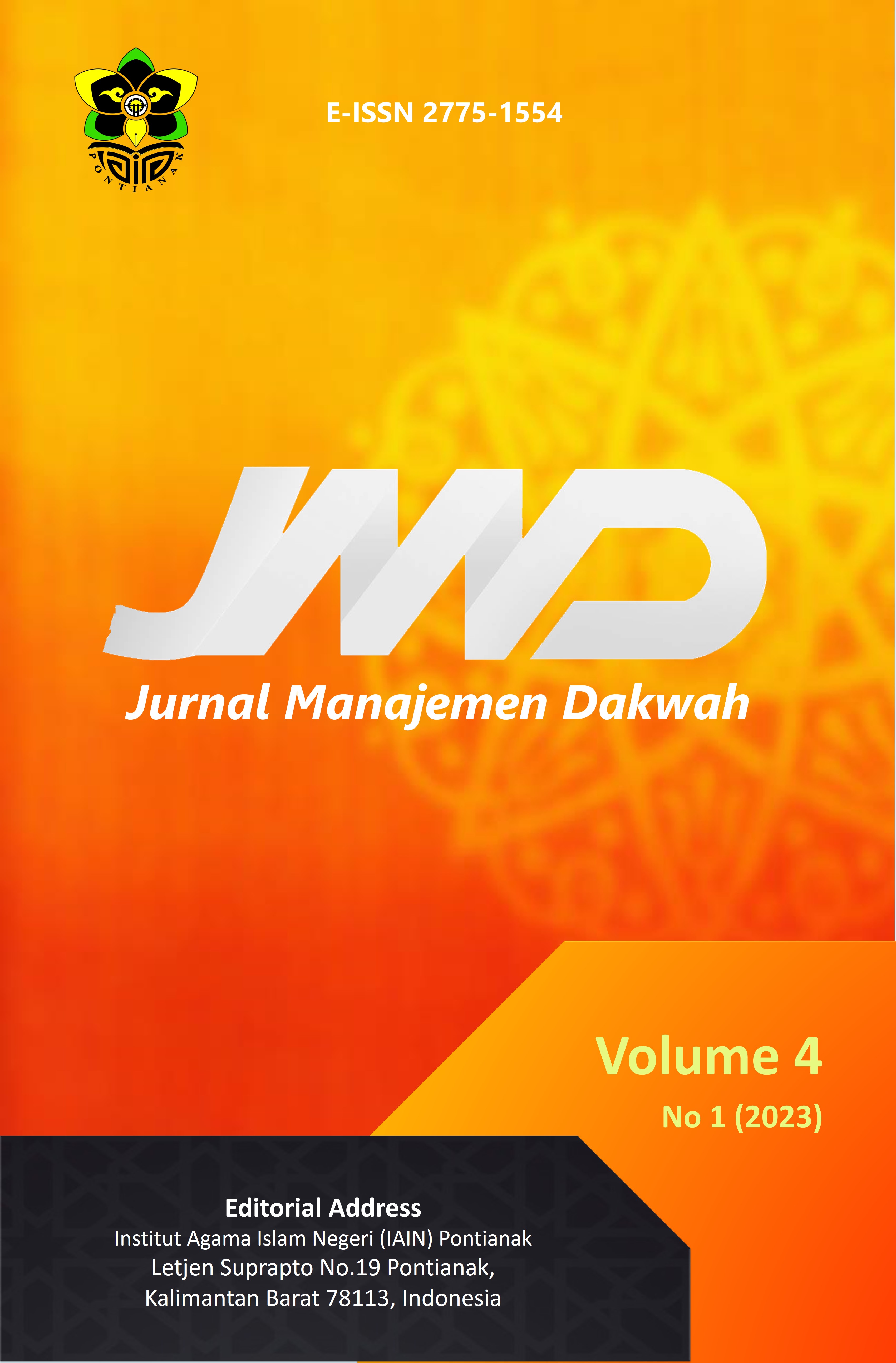WISATA RELIGI MAKAM MBAH NUR DURYA BIN ZAYYID WALANGSANGA PEMALANG DALAM PERSPEKTIF DAKWAH
DOI:
https://doi.org/10.24260/j-md.v4i1.1060Keywords:
Wisata Religi, Sejarah Makam, PengelolaanAbstract
Religious tourism is a type of tourism that has a religious background that has a high spiritual soul, both carried out by individuals and certain groups with the aim of getting closer to Allah SWT and expecting blessings and wisdom in life. Moah Nur Durya Tomb is famous in Pemalang district, One of the things that attracts pilgrims to visit Mbah Nur's grave is because of the karomah that he has. The well, which is right in the area of ??the tomb and on the banks of the river, adds to the dtra and becomes one of the potentials for religious tourism and binds visitors. The research activities that have been carried out at the Mbah Nur Tomb are inseparable from the management system at the Mbah Nur Tomb itself. Therefore the writing of this journal is focused on the history of the tomb of Moah Nur Durys bin Zayyid, how is the management system at the Tomb of Mbah Nur, and the process of spreading Islam in the Moga area. researched The research was carried out by the author and produced data regarding the history of Mbah Nur's Tomb from during his lifetime until he died. And the management system that exists at the Moah Nur Cemetery is managed directly by Sanad descendants of Belau without any interference from outsiders either from the government or from the tourism department.
Keywords: Religious Tourism History of Tombs, Management
Downloads
Downloads
Published
Versions
- 2025-11-18 (2)
- 2023-03-26 (1)
How to Cite
Issue
Section
License
Copyright (c) 2023 Dini Azkiya Fidzya Arisyahdwi

This work is licensed under a Creative Commons Attribution-NonCommercial-ShareAlike 4.0 International License.











